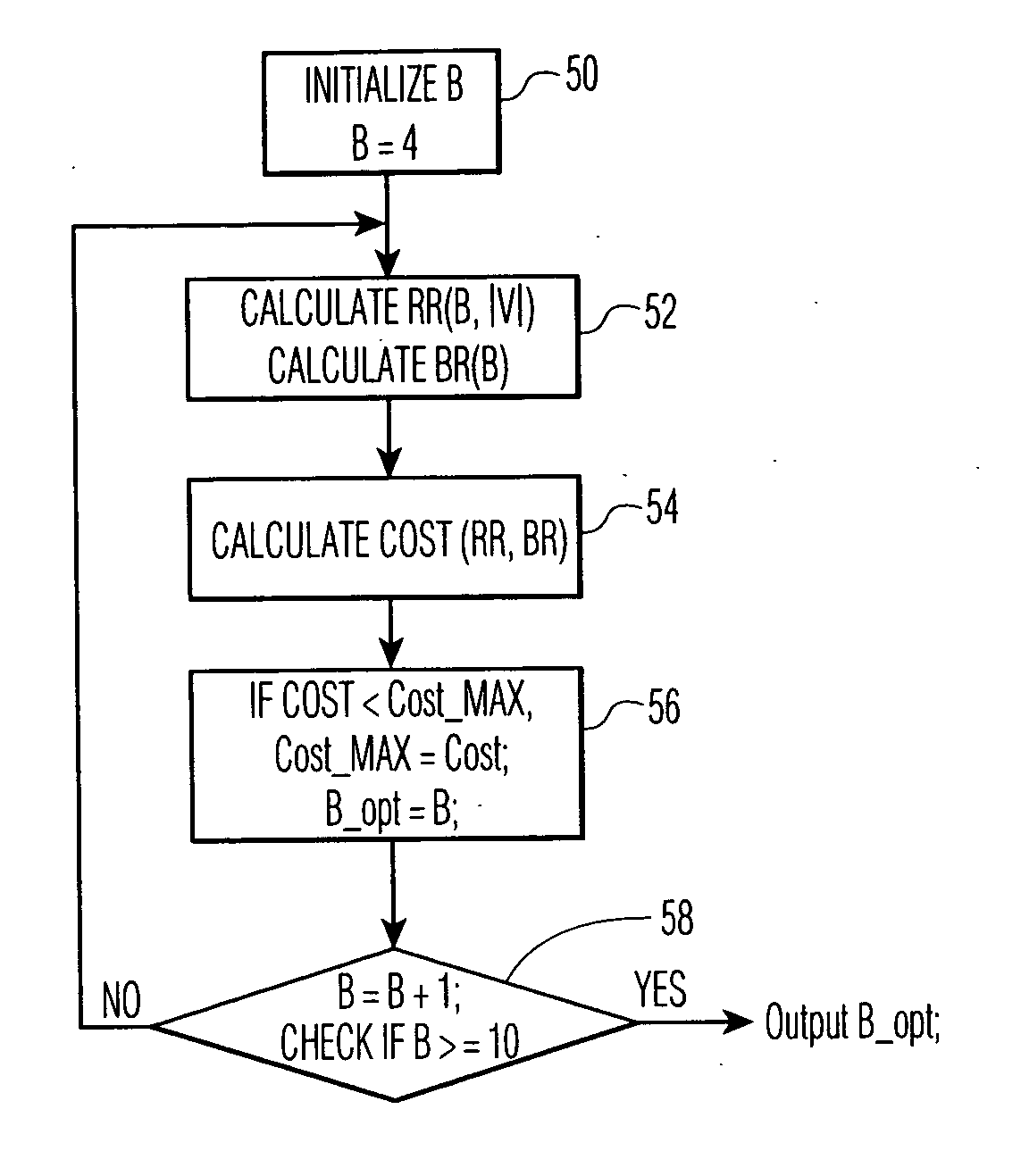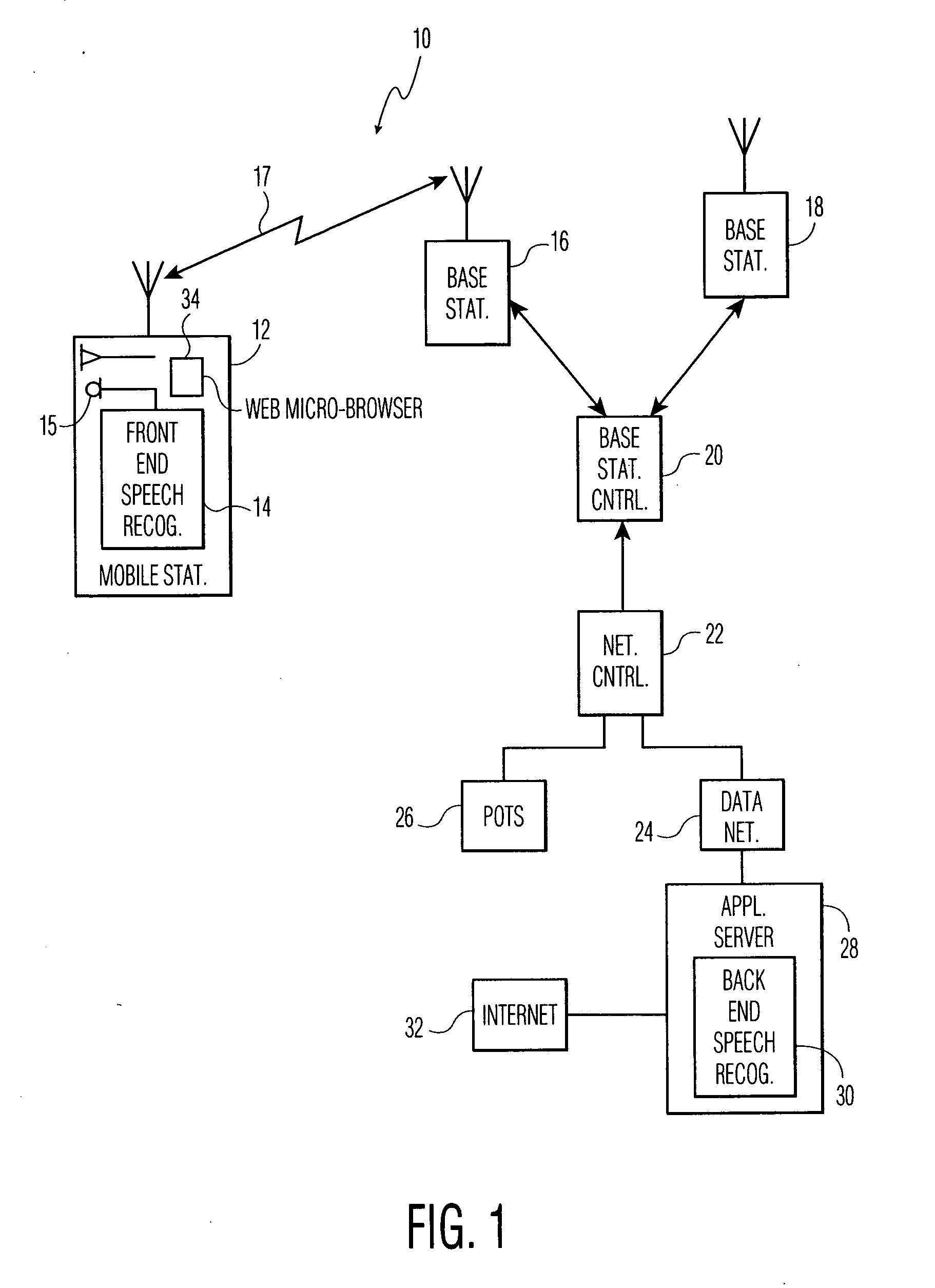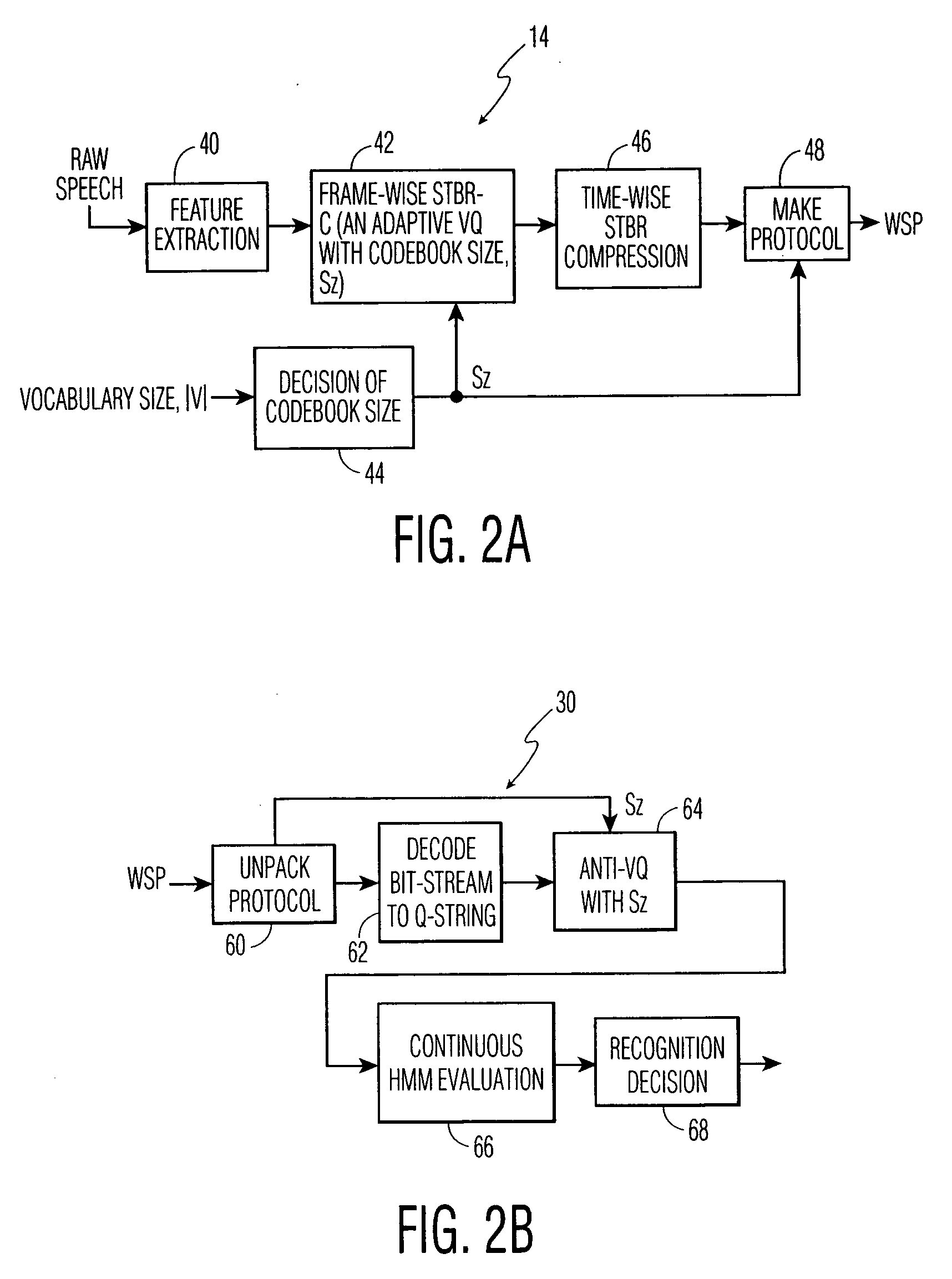Distributed speech recognition using dynamically determined feature vector codebook size
a technology of feature vector and codebook size, applied in speech recognition, speech analysis, instruments, etc., to achieve the effect of reducing capacity, reducing recognition performance, and reducing the required capacity
- Summary
- Abstract
- Description
- Claims
- Application Information
AI Technical Summary
Benefits of technology
Problems solved by technology
Method used
Image
Examples
Embodiment Construction
[0023] The present invention proposes a man-to-machine communication protocol, which the inventor has termed “Wireless Speech Protocol” (WSP) to compress speech to be transmitted from a near end to a far end over a wireless link and recognized automatically at the far end in a manner useful for automatic speech recognition rather than speech for human perception. WSP employs the concept of distributed speech recognition (DSR), in which the speech recognizer is split into two parts, one at the near end and the other at the far end.
[0024] Referring to FIG. 1, there is shown a digital wireless communication system 10, e.g. Global System for Mobile Communications (GSM), Time Division Multiple Access (TDMA), Code Division Multiple Access (CDMA), or systems proposed for Universal Mobile Telephone System (UMTS) or the Third Generation Partnership Project (3G-PP), including a plurality of mobile stations, of which mobile station 12 is shown including a front or near end speech recognition ...
PUM
 Login to View More
Login to View More Abstract
Description
Claims
Application Information
 Login to View More
Login to View More - R&D
- Intellectual Property
- Life Sciences
- Materials
- Tech Scout
- Unparalleled Data Quality
- Higher Quality Content
- 60% Fewer Hallucinations
Browse by: Latest US Patents, China's latest patents, Technical Efficacy Thesaurus, Application Domain, Technology Topic, Popular Technical Reports.
© 2025 PatSnap. All rights reserved.Legal|Privacy policy|Modern Slavery Act Transparency Statement|Sitemap|About US| Contact US: help@patsnap.com



